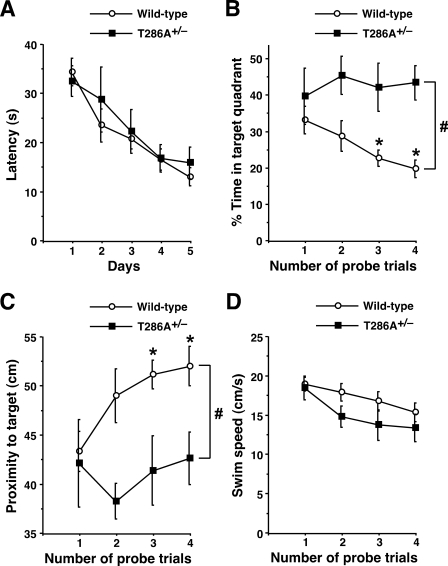Figure 2.
The αCaMKIIT286A+/– mutation interferes with extinction of spatial memory in the water maze. (A) αCaMKIIT286A+/– mice (n = 7) and wild-type littermates (n = 15) were trained with six trials (three blocks of two trials) per day for 5 d in the hidden platform version of the Morris water maze. Latencies to reach the escape platform are plotted across training days. (B,C) Twenty-four hours after the last training trial, mice received four consecutive probe trials in which the platform was removed from the pool. Wild-type control mice exhibited significant reductions in preference for the original target location as assessed by the percent time in the target quadrant (B) and proximity to the target (C). [*] P < 0.05 vs. probe trial 1. Note that αCaMKIIT286A+/– mutants showed no changes in spatial memory measures through the probe trials and exhibited significantly higher levels of selective search for the platform position during extinction as compared with those of wild-type controls. (#) P < 0.05 vs. wild-type. (D) The average swim speed neither significantly changed during the extinction trials nor differed between αCaMKIIT286A+/– mutants and wild-type controls. All data are presented as mean ± SEM.

